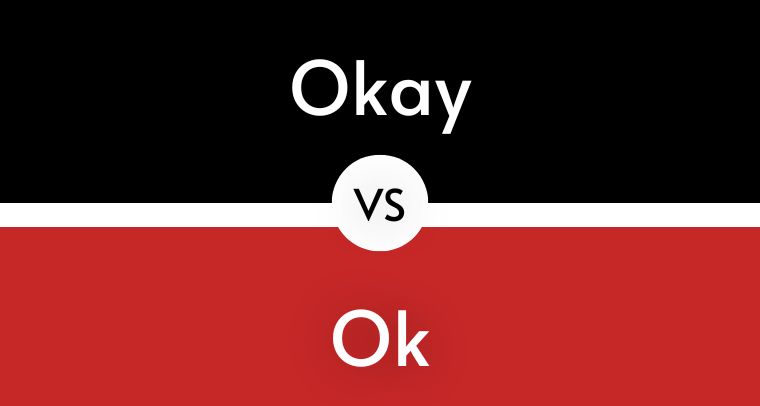You might be surprised to learn that both “okay” and “ok” spellings are correct. The older spelling, “okay,” is derived from an American Indian word, “okeh.” The newer spelling, “ok,” is derived from the initial letters of “oll korrect.” While “okay” is still the more popular spelling, “ok” is increasingly seen in print, especially in informal contexts. In this blog post, we’ll go over when to use the word “OKAY” AND “OK” in your writing.
Okay vs Ok: What is the difference?
Okay and OK are both acceptable spellings of the word meaning “all right” or “satisfactory.” The preferred spelling varies depending on the style guide you are using. According to the Associated Press Stylebook, the preferred spelling is OK. The Chicago Manual of Style recommends using okay. Either way, when you are using either spelling in your writing, it is always okay to use the abbreviated form, especially in informal writing.
When to use Okay
The general agreement is that it is okay to use “okay” in formal writing, but you should avoid using it in informal writing. Formal writing requires a more sophisticated level of language, and “okay” is generally considered appropriate in the context.
When to use Ok
The word “OK” is generally considered to be a casual word, and as such, it should be avoided in formal writing. However, there are some cases where using “OK” is perfectly acceptable. For example, “OK” can be used as an alternative to “yes” or “no” when responding to someone’s request. For example, if your boss asks if you’re available to work overtime, you can simply reply “OK.” Additionally, “OK” can be used to express agreement.
Okay vs Ok: Correct Spelling!
While both spellings “OKAY” and “OK” are correct and widely used and accepted, okay is the more popular spelling, according to most dictionaries. They have the same meanings and there is no difference between “OKAY” and “OK”.
Okay vs Ok: the Difference in Formality
Both OKAY and OK have the same meaning: they indicate that something is acceptable, good, or satisfactory. The main difference between “okay” and “OK” is that “okay” is more informal. It’s often used in speech, especially when we want to check if something is alright or we’re seeking approval. “OK,” on the other hand, is more formal and is usually seen in writing.
When deciding which one to use, it’s important to consider your audience. If you’re writing a formal email to your boss, you’ll want to use “OK.” But if you’re texting your friend about plans for the weekend, “okay” is more appropriate. Generally speaking, if you’re not sure which one to use, it’s better to err on the side of formality.
Okay vs OK: The Difference in Meaning
OKAY and OK are two different ways of spelling the same word. They both have the same meaning, which is “all right,” or “satisfactory.” The main difference between the two spellings is that okay is more common in American English, while OK is more common in British English. There is no right or wrong way to spell the word, so it’s up to you which spelling you use. If you’re writing for an American audience, it’s probably best to stick with okay. If you’re writing for a British audience, OK is probably the way to go.
“Okay” vs “Ok” examples
- Then we’ll have cookies, okay?
- Ok, but I’m going to hold you to that.
- Is my sister okay?
- If you have tiny chocolate clumps, that’s OK.
- I hope Jonny’s okay.
- It’s not bad. Are you ok?
- No, I’m not okay!
- Ok, I guess…I still don’t feel right about it though.
- She’ll be okay, Dusty said.
- That’s ok, and there’s nothing wrong with you.
Conclusion
The most common spelling is “okay,” but you may also see “OK,” or “O.K.” No matter how you spell it, the meaning is the same. They are used to indicate that something is satisfactory or acceptable. It’s perfectly fine to use either “okay” or “OK.” If you want to be more formal, use “OKAY.” If you want to be more informal, use “OK.”

